
pet first aid and urgent care
Pet guidance on basic animal first aid, plus when to seek veterinary care for cats and dogs, and tips on disaster preparedness for pets.
If this is a life-threatening medical emergency, don’t wait. Contact your local emergency veterinary hospital immediately.
When to seek pet emergency care
Contact your local emergency veterinary hospital immediately if
-
Your pet has obvious injuries, severe bites, or burns, or you suspect broken bones
-
You suspect your pet has been poisoned
-
Your pet is in obvious distress or pain
-
Your pet is wheezing, struggling to breathe, or has a bluish tinge to their lips or skin
-
You see or suspect a severe eye injury
-
Your pet is unable to walk, having seizures, or otherwise acting abnormally
The Pet Poison Helpline can help if you suspect poison
Poisoned pets need immediate emergency veterinary care. Get your pet to the ER as quickly and safely as possible.
It can also help to call the Pet Poison Helpline at 1-800-213-6680 (fee applies) while you're on your way to the ER. For an incident fee, they can supply initial information on poisoning for dogs and puppies, cats and kittens, birds, small mammals, large animals, and exotic species. Make sure to write down the case number they give you — it may come in handy at the ER.
See more at www.petpoisonhotline.com
Resources for first aid and urgent care
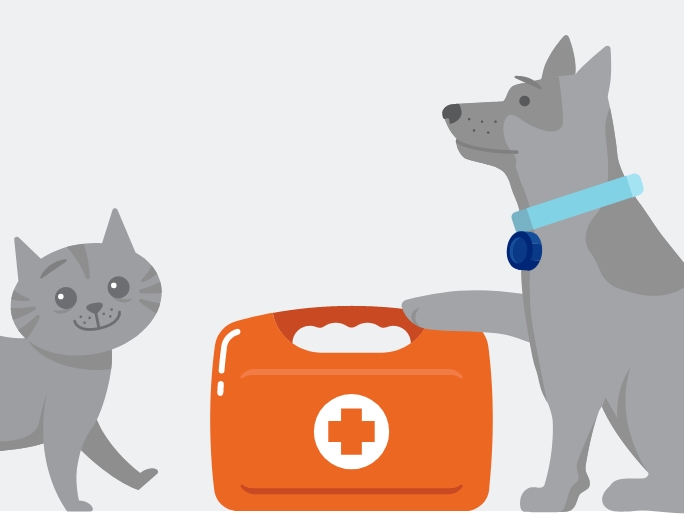
First aid for cats and dogs
Follow these guidelines in case of an accident.
Help your pet
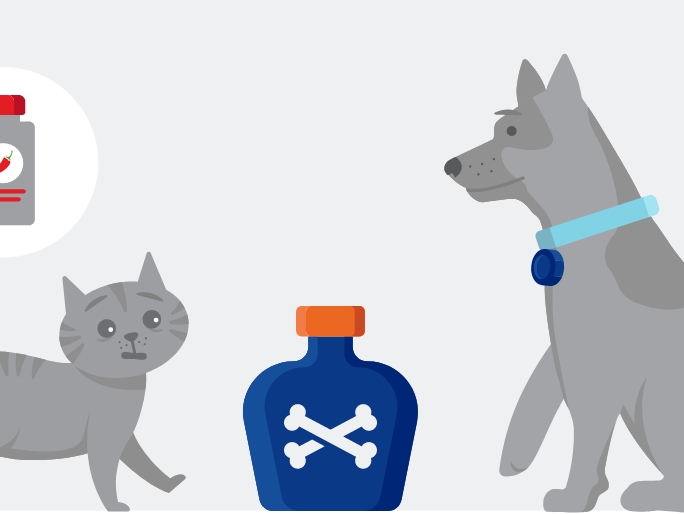
Help for pet poisoning
Symptoms to look out for and what not to do.
Prepare for poison
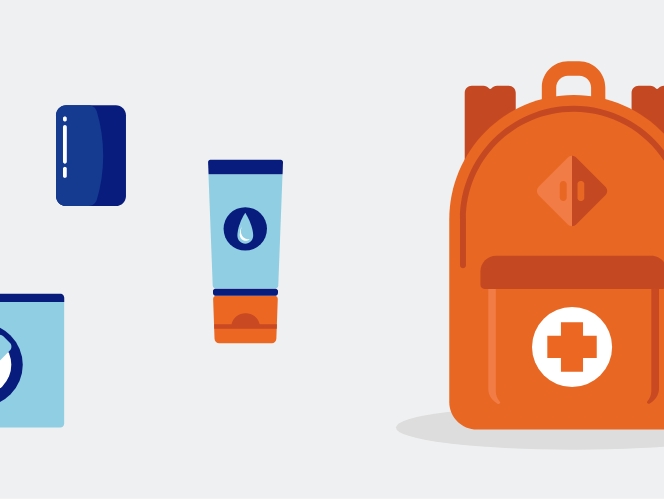
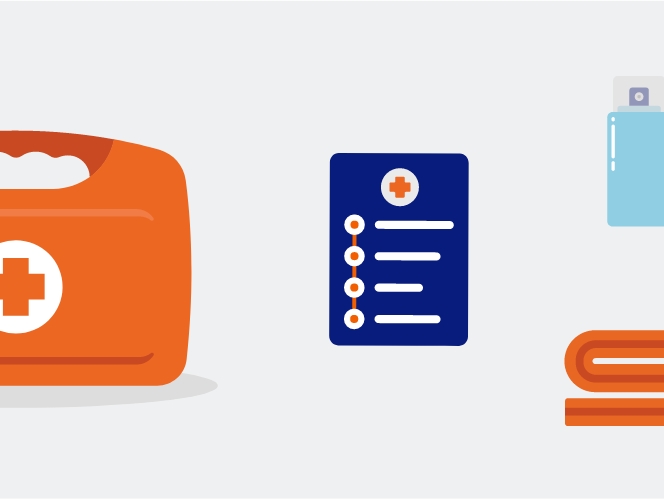
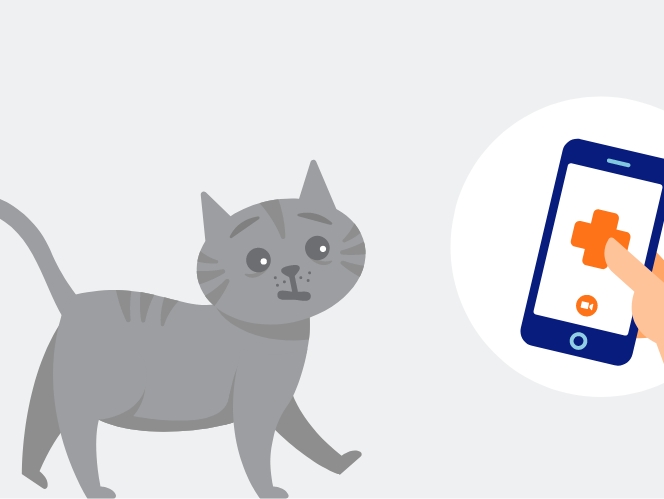
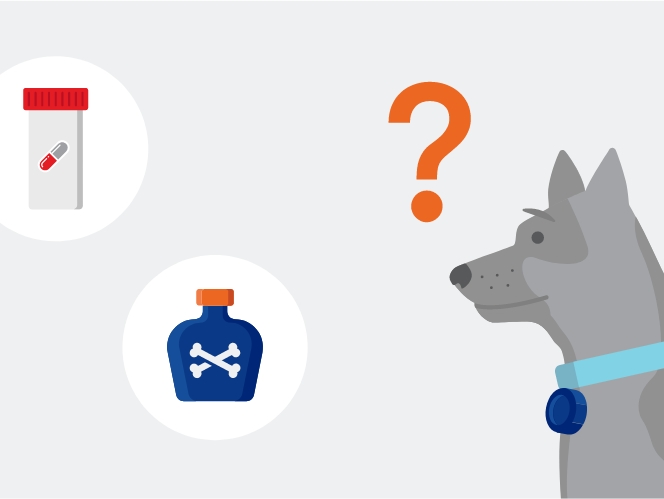
Common questions
What are the most common pet poisons?
Some of the most common include human medications (prescription and over the counter), rodenticides, and foods like grapes, onions, and chocolate.
Can I use an adhesive bandage on my dog?
Please don’t! While this is a great choice for human skin, dogs are quite furry, which makes the whole sticking-close-to-the-skin part an issue. Use gauze and/or a non-adhesive wrap bandage instead.
What is basic first aid for pets?
Basic first aid can help you contain injuries and prevent your panicked pet from doing more damage to themselves on the way to emergency veterinary care. You can help your pet by staying calm and taking quick action. Focus on gentle words and movements, get to a safe place, and safely restrain your pet (to avoid bites from a scared pet).
How to do first aid for dogs?
The goal of first aid for dogs is to help you get them to more intensive care. That means taking extra steps to keep both you and your pet safe.
Sick, hurt, or frightened animals may strike out even at people they love. For dogs, we recommend using nonadhesive materials like gauze, strips of T-shirt, or even neckties as a muzzle to help prevent bites.
You’ll also need specific materials to help you apply pressure and bind up wounds. Make sure you have an extra leash or harness on hand to help keep your pet still. A blanket or a beach towel in your kit can help you carry your pet to a safe area.
How do you treat a dog in an emergency?
Call your local emergency veterinary hospital to alert them of your pet’s issue. They can guide you with time-urgent first aid depending on the details of the situation.
What is the first aid treatment for cat?
The goal of first aid for cats is to help you get them to more intensive care. That means taking extra steps to keep both you and your pet safe.
Sick, hurt, or frightened animals may strike out even at people they love. For cats, you may need to swaddle or contain them in a blanket or towel to prevent further injury.
You’ll also need specific materials to help you apply pressure and bind up wounds. Make sure you have an extra leash or harness on hand to help keep your pet still. A blanket or a beach towel in your kit can help you carry your pet to a safe area.
How do you treat an injured cat?
- Stay calm
- Apply pressure with cloth/towels for at least three minutes to stop any bleeding
- Add more cloth/towels if bleeding through
- Do not remove materials used to stop bleeding
- Wrap the wound if possible
- Seek emergency veterinary care
Why is it important to have a pet first aid kit?
Having first aid materials on hand can help you focus on safely getting your pet the help they need. This should include nonstick bandages, rolled gauze, stretchy athletic bandages, bandage tape, scissors, a large towel or blanket, and extra leash or harness.
How to make a pet first aid kit?
- Contact information for your vet
- Contact information for your local emergency veterinary hospital
- Clean nonstick bandages, towels, or strips of cloth
- Rolled gauze
- Bandage tape
- Saline solution
- Sterile lubricant
- Styptic powder
- Digital thermometer
- Large towel or blanket
- Leash and harness
- Scissors
- Muzzle
- Bottle of water
What to put in a dog first aid kit?
- Contact information for your vet
- Contact information for your local emergency veterinary hospital
- Clean nonstick bandages, towels, or strips of cloth
- Rolled gauze
- Bandage tape
- Saline solution
- Sterile lubricant
- Styptic powder
- Digital thermometer
- Large towel or blanket
- Leash and harness
- Scissors
- Muzzle
- Bottle of water
Can you use first aid antibiotic ointment on a cat?
No, we don't recommend using antibiotic ointment on cats. Some ointments may contain ingredients that have caused allergic reactions. Your veterinarian will have safe suggestions to help your cat.

Need advice on flea control? Ping Pet Chat™!
Whether it's 3 a.m. or 3 p.m., connect with a real veterinary professional for immediate petcare advice. It's included in all Optimum Wellness Plans®!
Log in to start chattingMore about pet health
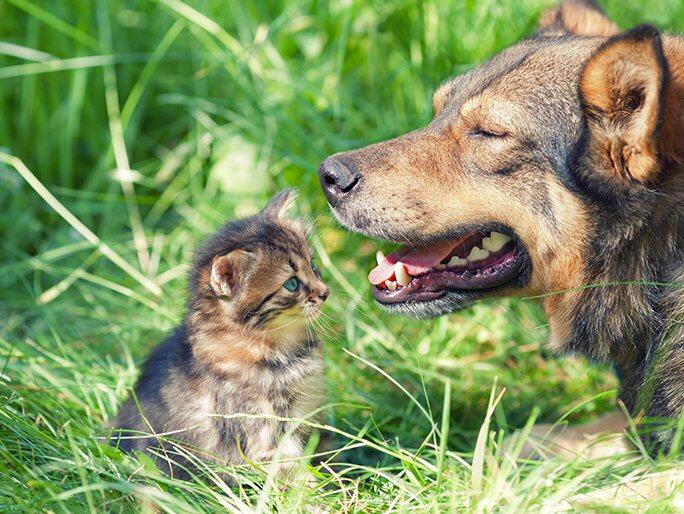
All about dental care and oral heath
A healthy mouth means a happy pet — see why!

Treating dog ear infections without a vet
What to know about popular home remedies.
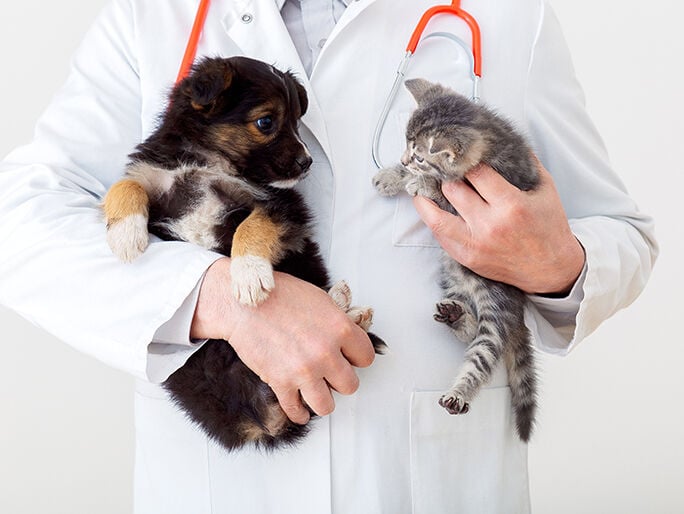
All about vaccinations for your pet
Get answers to FAQs about timing, safety, and more.
 Mites and mange
Mites and mange Podcast - Not Just Fluff
Podcast - Not Just Fluff





